Kitchen drains are the unsung heroes of a well-functioning kitchen, quietly whisking away water and waste to keep our cooking spaces clean and hygienic. However, when they become clogged, it can disrupt our daily routine and become a source of frustration. Understanding the common causes of kitchen drain clogs can help in preventing them and maintaining a smooth-running kitchen. In this blog, we’ll explore why kitchen drains get clogged and how to address these issues. And for those in Los Angeles, Orange County, and surrounding areas, I Love Sewers Rooting & Plumbing is here to provide expert solutions for all your plumbing needs.
1. Accumulation of Grease and Oil
One of the most common culprits behind kitchen drain clogs is the buildup of grease and oil. When washed down the drain, these substances can solidify and adhere to the pipes, gradually accumulating other debris and forming a stubborn blockage.
2. Food Waste
While garbage disposals are designed to handle food waste, certain types of food can still cause problems. Fibrous materials like celery, corn husks, or onion skins can entangle the blades of the disposal unit. Additionally, substances like coffee grounds or eggshells can accumulate in the pipes, leading to blockages. The American Society of Home Inspectors provides a guide on maintaining your garbage disposal and what should not be put down the drain.
3. Foreign Objects
Sometimes, kitchen drains get clogged due to objects that have no business being there. Small utensils, bottle caps, or even chunks of broken dishware can find their way into the drain and cause a blockage. These objects can trap other debris, exacerbating the clog.
4. Soap Scum and Mineral Buildup
Soap residue, combined with minerals present in water, can form soap scum, which may line the walls of pipes and restrict water flow. In areas with hard water, mineral buildup (or scaling) can also narrow the pipe diameter over time, making clogs more likely. The U.S. Geological Survey offers a detailed explanation of hard water and its effects.
5. Pipe Damage or Misalignment
Sometimes the issue may not be what’s inside the pipes but the pipes themselves. Older pipes may corrode or break, and ground movements or heavy construction nearby can cause pipes to shift or collapse. These problems can restrict water flow and cause repeated clogging.
6. Inadequate Ventilation
Proper venting is essential for maintaining air pressure and allowing water to flow smoothly through the pipes. If the ventilation system connected to your kitchen drain is blocked or improperly installed, it can lead to slow drainage and frequent clogs.
7. Tree Root Intrusion
For homes with drainage lines running near trees, root intrusion can be a concern. Tree roots can grow into pipes, seeking moisture and nutrients, and over time, they can cause significant blockages and damage.
Conclusion
Clogged kitchen drains can be more than just an inconvenience; they can be indicative of underlying issues that need prompt attention. While some clogs can be resolved with simple measures, recurrent or persistent problems might require professional intervention. Understanding the common causes of clogs can help you prevent them and maintain a functional and efficient kitchen. For residents in Los Angeles, Orange County, and surrounding areas, I Love Sewers Rooting & Plumbing offers professional, reliable services to tackle all your plumbing challenges. With our expertise, we ensure that your kitchen drains and the entire plumbing system function smoothly, keeping your home comfortable and hassle-free. Trust I Love Sewers Rooting & Plumbing for all your plumbing needs – we’re here to keep your drains clear and your home flowing smoothly.





